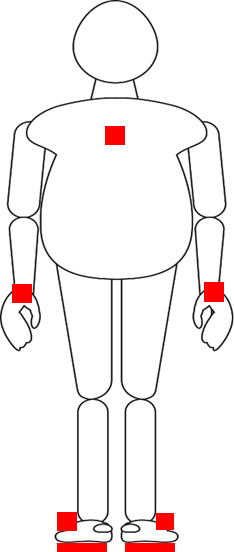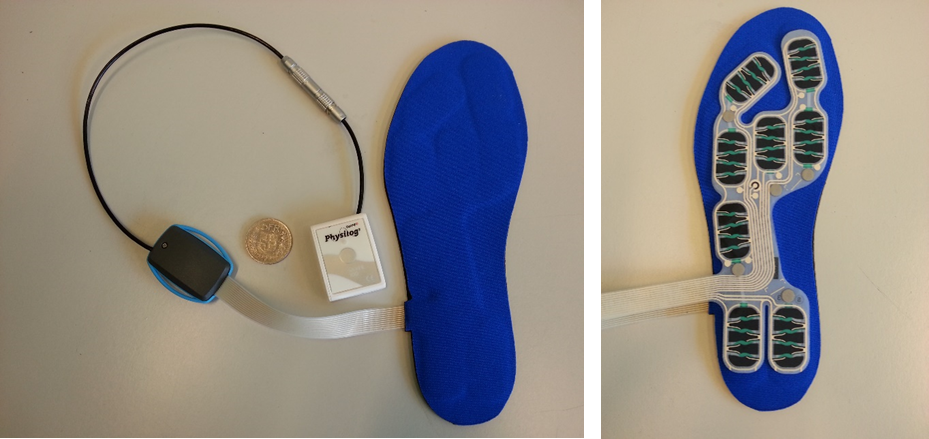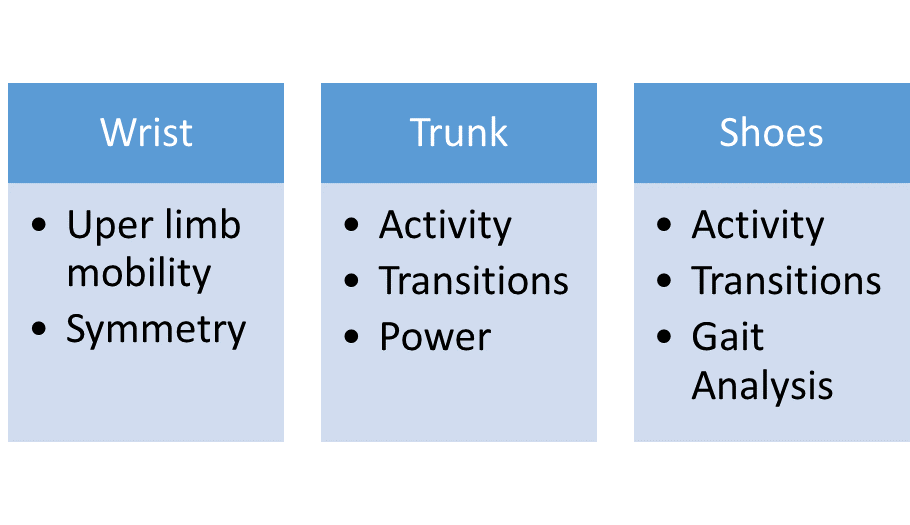- Contact person: Anisoara Ionescu
- People involved: Christopher Moufawad El Achkar
- Partners: Kliniken Valens
- Funding source:
Overview
Nearly 17 million people are affected by stroke every year. Stroke survivors have varying degrees of disability and motor impairment, thus requiring intensive and tailored rehabilitation. There is also a substantial risk that the effects of rehabilitation wear off after a certain amount of time due to poor physical activity. Current assessment techniques such as questionnaires or in‑lab functional tests are unable to provide objective information about daily life mobility in stroke patients. Wearable sensors, however, have been widely used to monitor the activities performed by users in their home environment. We propose a monitoring configuration based on two already validated systems: an inertial measurement unit at the trunk level and instrumented shoes, along with wrist sensors, to quantify and characterize the daily behavior of stroke survivors.

Methods

Patients recruited at Klinik Valens will be monitored during their hospital stay and at home after their rehabilitation for 1-2 days at different time points. They will be equipped with the instrumented shoes, one IMU at each wrist and one IMU at the trunk. This will allow the profiling of upper limb and lower limb mobility, as well as potential measurements of symmetry, gait analysis, power and other transition characteristics. Patients will be free to perform their activities without a structured protocol and no presence of an external observer.

Outcomes
The sensor configuration will provide substantial data regarding mobility in daily life, both during rehabilitation and at-home. The combination of mobility parameters (gait analysis, transition characterization) and daily physical activity (frequency, intensity, time, type and pattern) will be correlated to clinical assessments to monitor the behavior of a stroke patient after their rehabilitation period.